Posts Tagged: showy milkweed
A Bee-Line Toward the Tropical Milkweed
Honey bees just can't get enough of our tropical milkweed, Asclepias curassavica. We plant three species of milkweed (the host plant for...
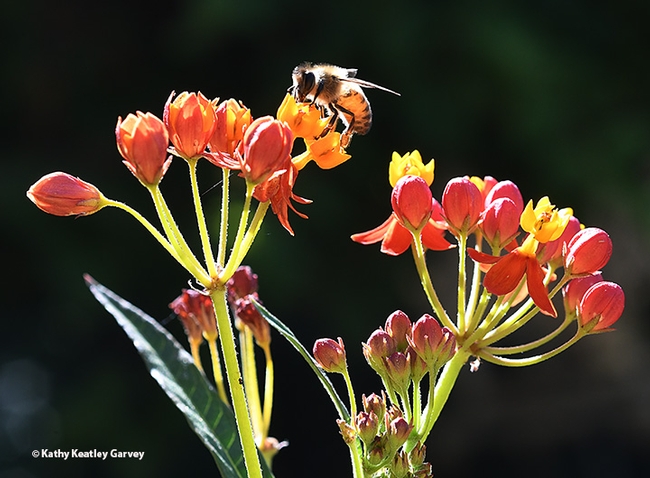
A honey bee forages on tropical milkweed, Asclepias curassavica, in a Vacaville pollinator garden on July 27. (Photo by Kathy Keatley Garvey)
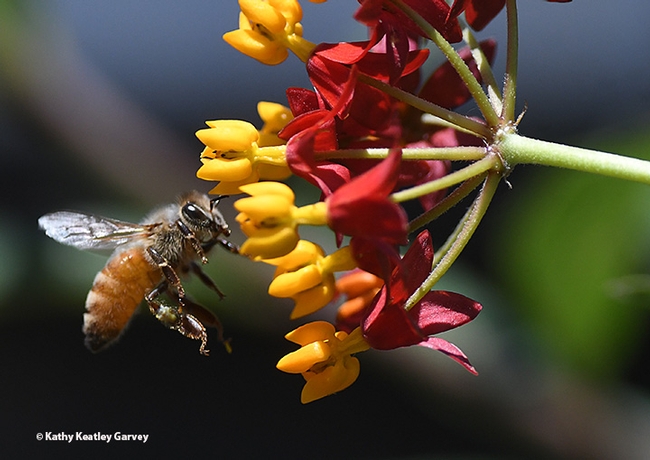
A honey bee makes a beeline for the tropical milkweed,Asclepias curassavica. (Photo by Kathy Keatley Garvey)
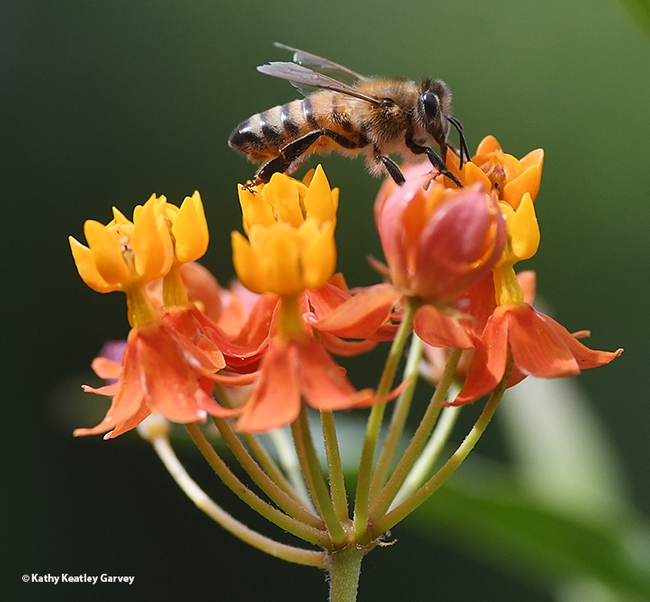
Honey bee nectaring on the tropical milkweed. (Photo by Kathy Keatley Garvey)
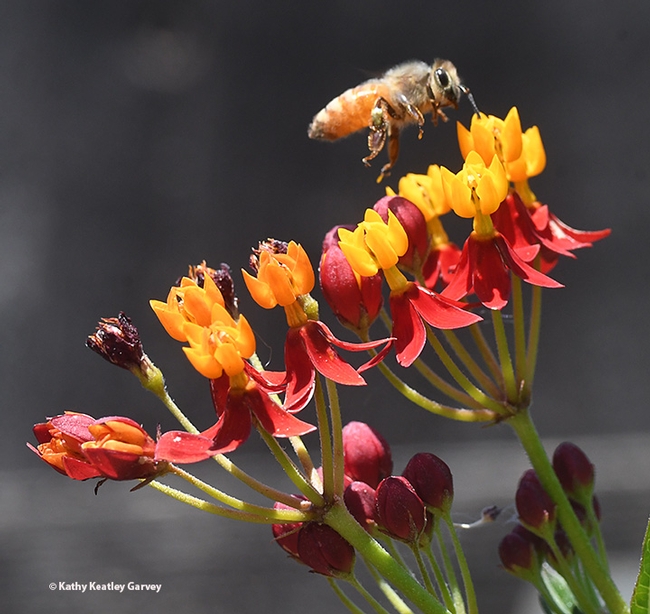
Up, up and away toward the next tropical milkweed blossom. (Photo by Kathy Keatley Garvey)
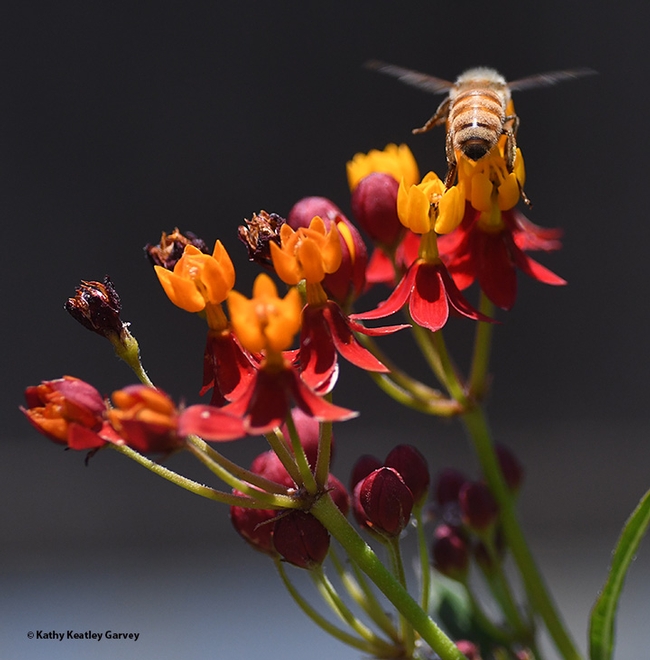
Honey bee takes flight, returning to her colony. (Photo by Kathy Keatley Garvey)
Love at First Bite, Love at First Sip
Picture this during National Pollinator Week: five monarch caterpillars and assorted honey bees sharing tropical milkweed. It was love at first...
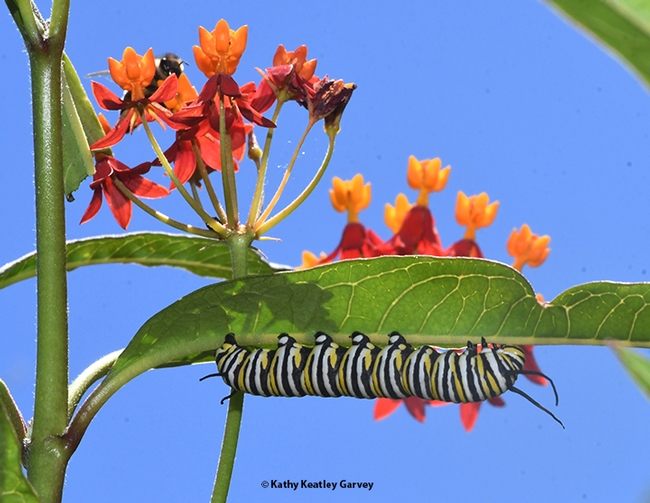
Peek a bee! A honey bee forages on tropical milkweed blossoms while a monarch caterpillar chows down. (Photo by Kathy Keatley Garvey)
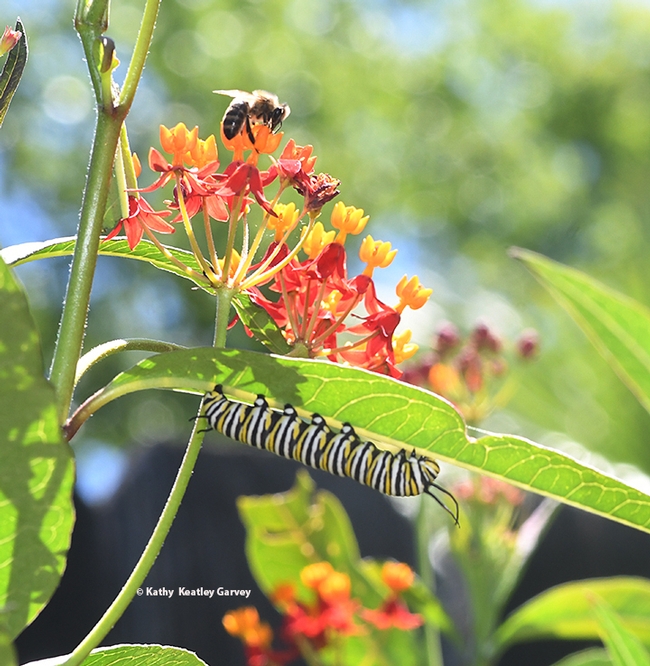
Sharing during National Pollinator Week: a honey bee and a monarch caterpillar on tropical milkweed. (Photo by Kathy Keatley Garvey)
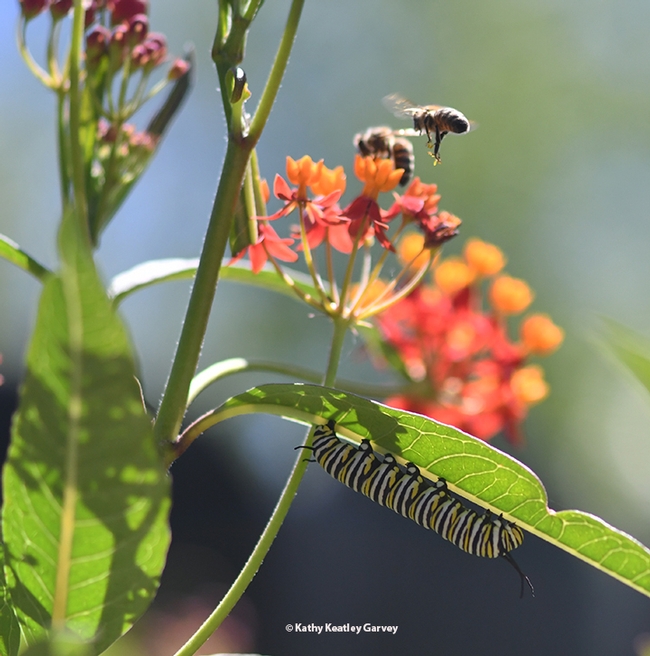
Two honey bees go about their "bees-ness" while a monarch caterpillar dines. Milkweed is the host plant of the monarchs. (Photo by Kathy Keatley Garvey)
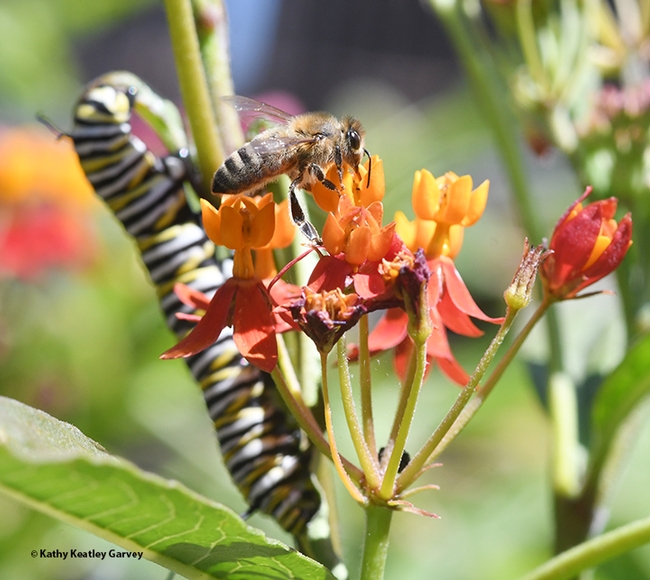
Close quarters: a honey bee and a monarch caterpillar on tropical milkweed. (Photo by Kathy Keatley Garvey)
Orange You Glad It's Almost Halloween?
You can't get any more Halloween than a bold (daring) jumping spider with orange spots! This common North American spider was hanging out...
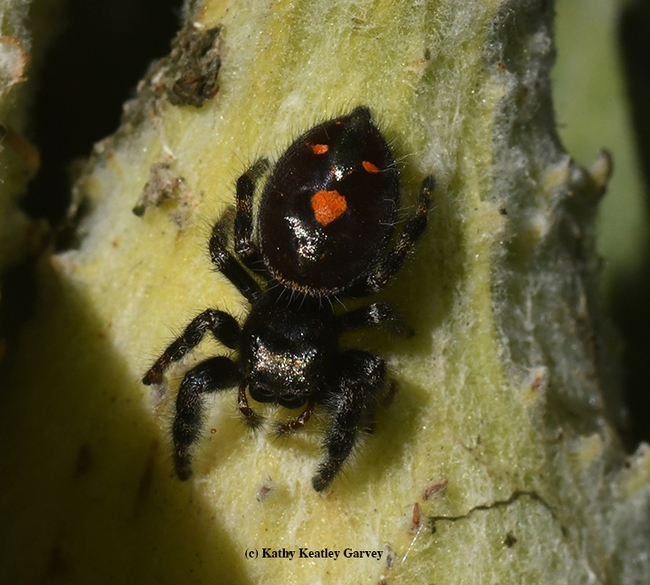
Orange you glad it's almost Halloween? A juvenile bold jumping spider, Phidippus audax, hangs out on a showy milkweed. (Photo by Kathy Keatley Garvey)
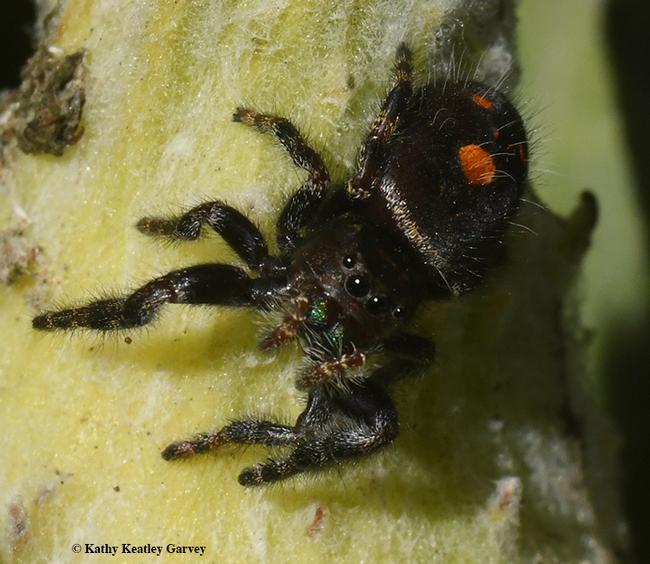
A predator, a bold or daring jumping spider, crawls around on a showy milkweed. Note its iridescent chelicerae. (Photo by Kathy Keatley Garvey)
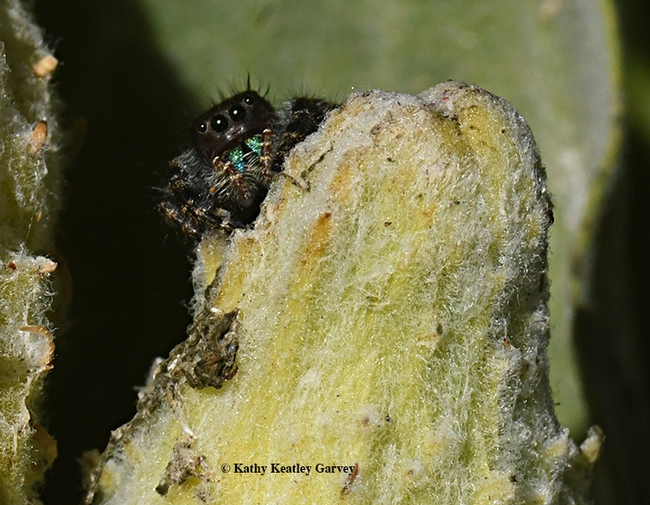
My safe place! The bold or daring jumping spider peers out at its surroundings. (Photo by Kathy Keatley Garvey)
The Monarch Butterflies Arrive!
A little haggard, a little worn, a little ragged, a little torn. But there she was on Monday, Aug. 1, the first monarch of the season to lay eggs in...
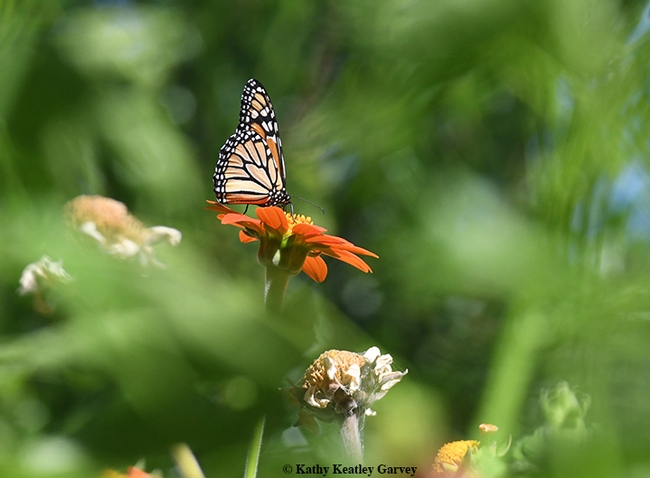
A male monarch visits the Mexican sunflower patch in the Garvey pollinator garden. (Photo by Kathy Keatley Garvey)
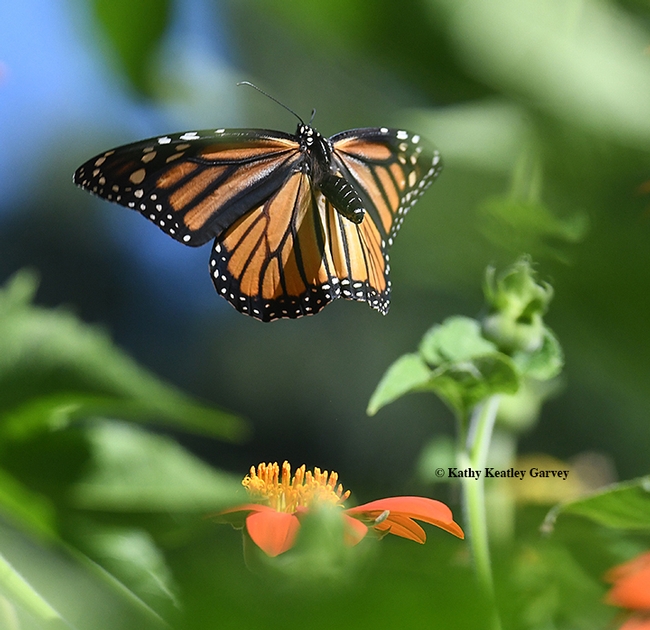
Oops! Time to leave. This male monarch was spooked by longhorn bees targeting him as he nectared on the Tithonia. (Photo by Kathy Keatley Garvey)
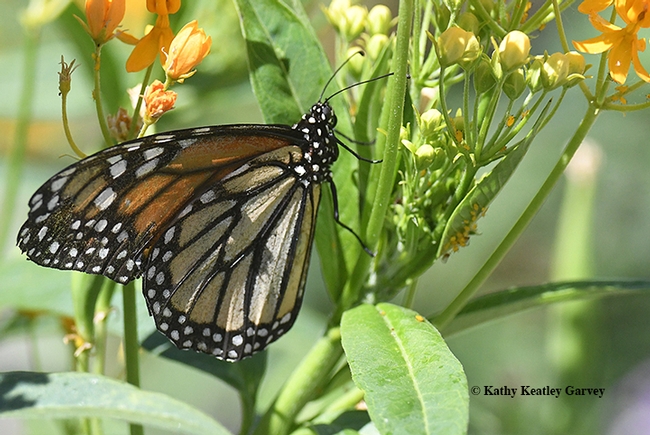
A female monarch stops at the tropical milkweed, Asclepias curassavica. (Photo by Kathy Keatley Garvey)
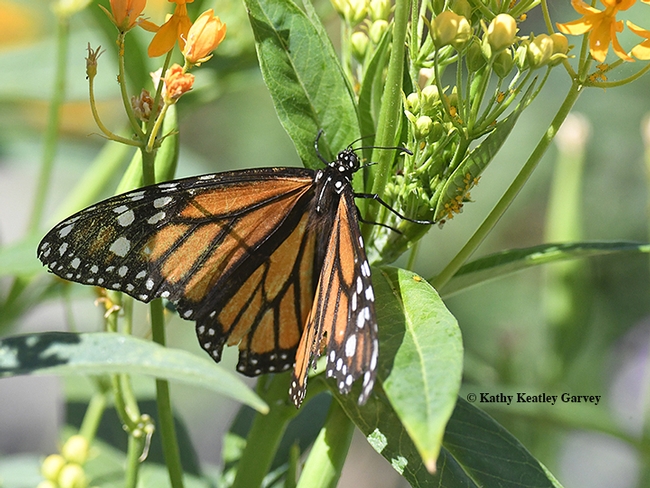
The female monarch spreads its wings. She ended up laying eggs on the tropical milkweed and showy milkweed. Note how tattered she is--the predators missed!(Photo by Kathy Keatley Garvey)
Got Milkweed? Bees Like It, Too!
The Bohart Museum of Entomology at the University of California, Davis, stocks a "Got Milkweed?" t-shirt in its gift shop. In real life, insects...
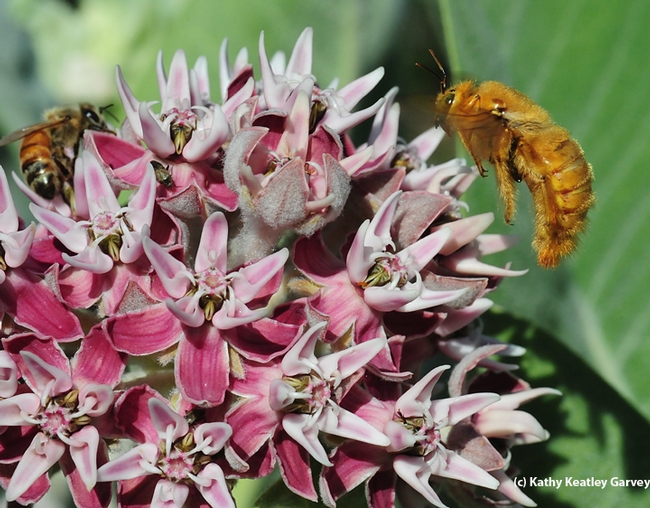
A male Valley carpenter bee, Xylocopa varipuncta (aka "teddy bear bee"), heads for the showy milkweed, Asclepias speciosa. A honey bee is already there. (Photo by Kathy Keatley Garvey)
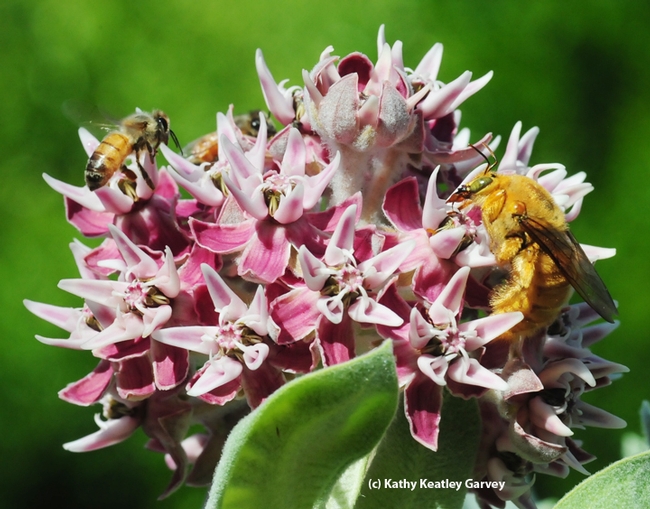
Three's a crowd? That's how many bees are on this milkweed. One carpenter bee and two honey bees. (Photo by Kathy Keatley Garvey)
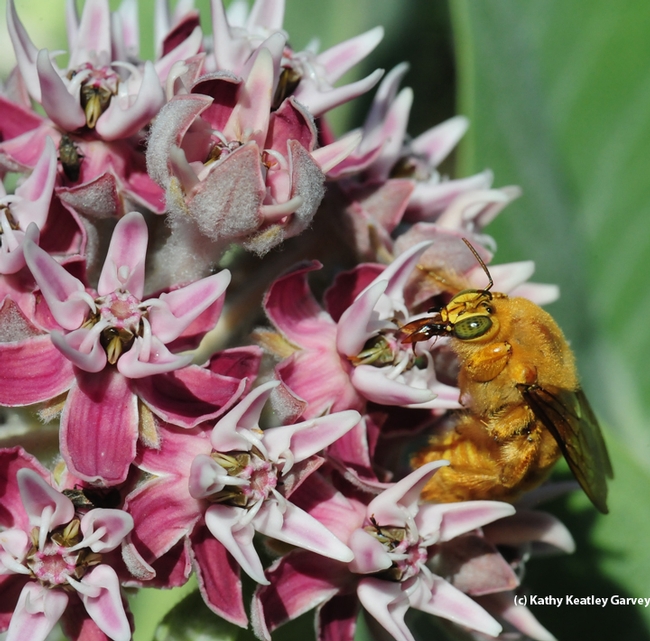
Close-up of the male Valley carpenter bee's tongue or proboscis. (Photo by Kathy Keatley Garvey)
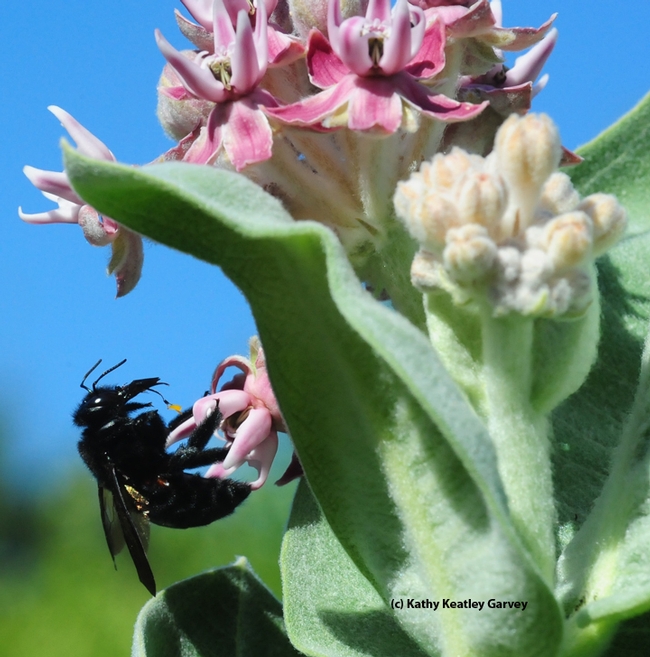
A female Valley carpenter bee arrives to take her share. The male of this species is a green-eyed blond (a clear case of of sexual dimorphism). (Photo by Kathy Keatley Garvey)

